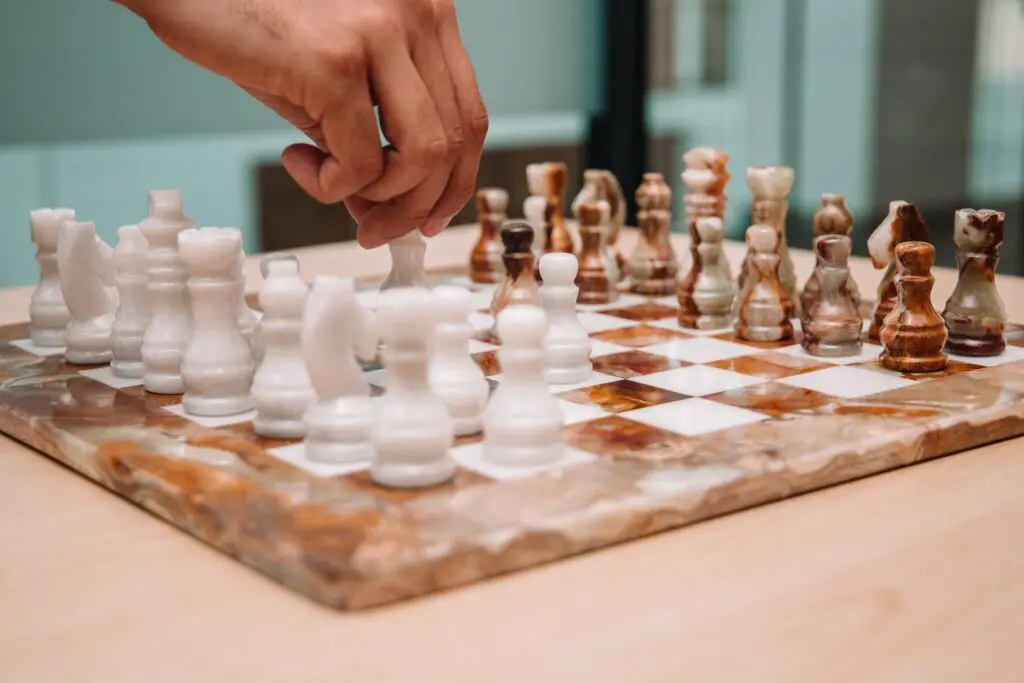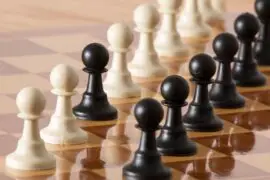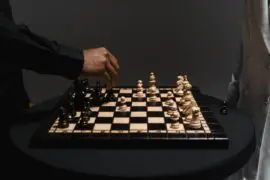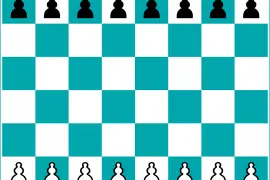3 Golden Rules of Chess. Chess is more than just a game; it’s a battle of wits, a test of strategic acumen, and a journey into the realms of endless possibility. Its complexity is often likened to a cosmic universe with its myriad constellations of tactics, strategies, and variations. For those embarking on this fascinating voyage, understanding the game’s core principles can help navigate its intricacies. One might ask, “What are the 3 golden rules of chess?”
These ‘golden rules’ serve as the guiding stars for any aspiring player, helping them chart a clear course amidst the stormy seas of tactical battles and strategic planning. Far from arbitrary, these rules have been distilled from centuries of chess knowledge, passed down from grandmasters, and distilled from countless games. They are the foundational principles that give structure to the game’s strategic complexity.
Recognizing and understanding these rules are the first steps in mastering the game of chess. These rules illuminate the path, providing clarity amidst the chaos, and guiding players to make sound decisions that could tip the scales in their favor. The three golden rules are quintessential compass points on your chessboard journey – guiding you towards controlling the center, developing your pieces, and ensuring your king’s safety.
Section 1: Control the Center
Contents
In chess, the center refers to the four squares right in the middle of the chessboard – e4, e5, d4, and d5. These squares are the strategic heart of the board and constitute a crucial battlefield in any game of chess. These four squares form the basis for many openings and strategies. They’re the touchpoints where early-game confrontations often occur and plans are laid.

Why is controlling the center so important? Here are two primary reasons:
Firstly, controlling the center provides increased mobility for your pieces. Chess pieces are generally more powerful when they’re in the center of the board. For example, a knight on the edge of the board can only control up to four squares, whereas a knight in the center can control up to eight. This principle applies to all pieces – the more central a piece, the more options it has.
Secondly, controlling the center can limit your opponent’s options. If you control the center, you often indirectly control the rest of the board. Your opponent will have to navigate their pieces around the periphery, which can make their game slower and less coordinated. The center’s control can disrupt the opponent’s plans and give you the upper hand in launching your attacks.
So, how do you control the center? The most straightforward strategy is to occupy the center with your pawns in the opening moves, often referred to as the “pawn center.” Opening moves such as 1.e4 and 1.d4 are commonly used to achieve this. Additionally, you can control the center by attacking or defending the central squares with your pieces, such as knights and bishops, from the sides. For instance, developing your knight to squares like f3 or c3 enables it to control the d4 and e5 squares, assisting in the control of the center.
Section 2: Develop Your Pieces
After understanding the importance of controlling the center, the next golden rule of chess is to develop your pieces. In the language of chess, ‘development’ refers to the process of getting your pieces off their original squares and into positions where they can actively participate in the game. The opening stages of the game mainly involve moving your knights and bishops into play, positioning your rooks, and importantly, casting your king.
The importance of swift and effective piece development in the early game stages cannot be overstated. Having your pieces developed allows you to put pressure on your opponent from the very beginning, potentially forcing them into defensive positions or causing them to make mistakes. It also enables you to connect your rooks, which often play a critical role in the middle and endgame stages.
Now, let’s move to some tips and examples on efficient piece development:
- Knights Before Bishops: It’s often a good idea to develop your knights before your bishops. The reason for this is that the knights have fewer options on where they can move, so it’s easier to determine their best location early on. Generally, knights are best placed on c3, f3, c6, or f6, where they control the center squares.
- Don’t Move the Same Piece Multiple Times in the Opening: One principle of efficient development is not moving the same piece multiple times during the opening. Each move should bring a new piece into play, helping you achieve the maximum mobilization of your forces as quickly as possible.
- Minimize Pawn Moves: While moving pawns to control the center is crucial, too many pawn moves can slow down piece development. As a general rule, focus on getting your pieces into play before making unnecessary pawn moves.
- Castle Early: Castling not only provides a haven for your king but also connects your rooks. It’s usually a good idea to castle early in the game, which simultaneously aids in piece development and king safety.

Section 3: King Safety So,3 Golden Rules of Chess
Its importance is highlighted by one simple rule: if the king is checkmated, the game is over. Protecting the king from threats and checkmate is paramount, making the king’s safety a top priority. It’s the third golden rule of chess, and arguably, the most critical.
To ensure the king’s safety, there are a few strategies to keep in mind.
Castling: Castling, as we mentioned earlier, is not just about piece development; it’s a significant move for king safety. By castling, you tuck your king away on either the kingside or queenside, behind a wall of pawns, where it’s typically safer from attacks. It’s usually best to castle early before the center opens up and attacks against the king become more potent.
Avoid Unnecessary King Movements: In the early and middle game, the king should not be a fighting piece. Moving the king unnecessarily can expose it to attacks. It’s usually best to keep the king relatively immobile, tucked safely away while the other pieces do the battling.
Don’t Weaken the King’s Defense: Be careful about moving the pawns in front of your castled king. While sometimes these pawn moves are necessary for various strategic reasons (like launching an attack or creating space for your pieces), they can potentially weaken your king’s safety. Each pawn move can create weaknesses and open lines that your opponent can exploit to attack your king.
Here are a few additional king safety tips and examples:
- King in the Middle: If your opponent has not castled and their king is still in the center, this can often be a signal to open up the game and start an attack. An uncastled king can be a vulnerable target.
- Opponent’s Pawn Storm: If your opponent starts to push pawns toward your king, this could be the beginning of a pawn storm to attack your king. In this situation, it’s important to think carefully about your defensive plan. Sometimes it’s best to counter-attack in the center or on the other side of the board.
- Endgame King Activity: In the endgame, when there are fewer pieces on the board, the king can transform from a liability into an asset. In this stage of the game, it’s generally safe to bring your king out into the open and use it actively in the game.
Conclusion
These principles serve as foundational guidelines that shape the contours of a chess game, providing strategic direction and helping to navigate the complexities of the 64 squares.
Controlling the center enables greater mobility for your pieces and restricts your opponent’s options. Swift and effective development of your pieces set you up for a strong early game, ready to tackle any confrontations. Lastly, focusing on king safety ensures the heart of your game – the king – remains shielded from threats, reducing the chances of a quick and premature checkmate.
However, it’s crucial to remember that these rules, while foundational, are not exhaustive. The rich tapestry of chess strategy expands far beyond these three rules. Every game of chess is a unique journey, filled with strategic decisions, tactical battles, and valuable lessons. The complexities of pawn structures, the subtleties of positional play, the explosive nature of tactical motifs, and the quiet elegance of endgame techniques all contribute to the broader strategies that define the royal game.
As you continue to develop your chess skills, keep these three golden rules at the forefront of your strategy. Practice them, understand them, and then gradually explore the deeper intricacies of chess. Make a habit of studying games, solving puzzles, and learning from each match you play. This continuous process of learning and development is the true beauty of chess, a journey that both challenges and rewards those who embark on it.
As you ponder over your next move on the chessboard, remember these golden rules, and let them guide your play. And as you delve deeper into the game, remember to enjoy each step of your chess journey. After all, the true essence of chess lies not just in winning, but in the beauty of the game itself.





